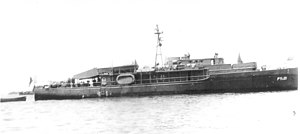
USS Abbot (DD-629) was a Fletcher-class destroyer in the service of the United States Navy. She was the second Navy ship named after Commodore Joel Abbot (1793–1855).

USS Hopewell (DD-681) was a Fletcher-class destroyer in service the United States Navy from 1943 to 1947 and from 1951 to 1970. She was finally sunk as a target in 1972.
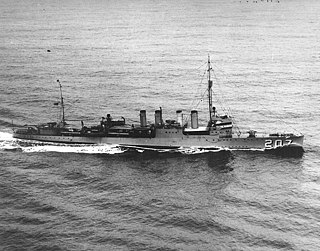
USS Southard (DD-207/DMS-10) was a Clemson-class destroyer in the United States Navy during World War II. She was the second Navy ship named for Secretary of the Navy Samuel L. Southard (1787–1842).
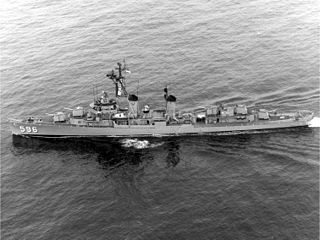
USS Shields (DD-596), was a Fletcher-class destroyer of the United States Navy.

USS Moale (DD-693) was the second Allen M. Sumner-class destroyer of the United States Navy.

USS Compton (DD-705), an Allen M. Sumner-class destroyer, was named for Lewis Compton, who served in active duty in the Navy during World War I and Assistant Secretary of the Navy from 9 February 1940 to 13 February 1941.
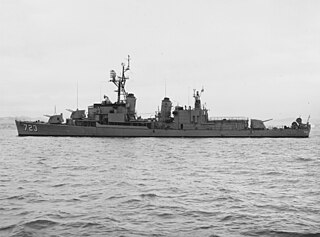
USS Walke (DD-723), an Allen M. Sumner-class destroyer, was the third ship of the United States Navy to be named for Henry A. Walke, a Rear Admiral during the Mexican–American War and the American Civil War. The third Walke (DD-723) was laid down on 7 June 1943 at Bath, Maine, by the Bath Iron Works and launched on 27 October 1943; sponsored by Mrs. Douglas Dillon. The ship was commissioned at the Boston Navy Yard on 21 January 1944.

USS Brush (DD-745), an Allen M. Sumner-class destroyer, is the only ship of the United States Navy to be named for Charles Brush, an American inventor and philanthropist.

USS James C. Owens (DD-776), an Allen M. Sumner-class destroyer, is the only ship of the United States Navy FRAM II class to be named for Lieutenant James C. Owens Jr., a member of Torpedo Squadron 8 on board USS Hornet. His entire squadron was lost in an attack against Japanese aircraft carriers 4 June during the Battle of Midway. Lt. Owens received the Navy Cross and the Presidential Unit Citation (US) posthumously.
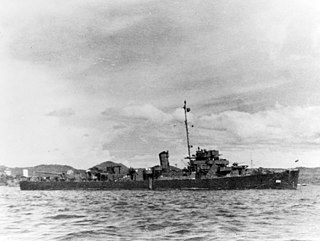
USS James E. Craig (DE-201) was a Buckley-class destroyer escort in service with the United States Navy from 1943 to 1946. She was sunk as a target in 1969.

USS Crouter (DE-11) was an Evarts-class destroyer escort of the United States Navy in commission from 1943 to 1945. The ship was named after Mark Hanna Crouter (1897–1942), U.S. Navy officer and Navy Cross recipient.
USS Annoy (AM-84) was an Adroit-class minesweeper of the United States Navy. She was laid down on 3 December 1941 at Portland, Oregon, by the Commercial Iron Works; launched on 6 April 1942; and commissioned on 2 September 1942. In 1944 she was reclassified as a patrol craft and renamed PC-1588.

USS LeHardy (DE-20) was an Evarts-class destroyer escort constructed for the United States Navy during World War II. It was promptly sent off into the Pacific Ocean to protect convoys and other ships from Japanese submarines and fighter aircraft. At the end of the war, she had the honor of proceeding to Wake Island, as the Japanese commander surrendered, and raising a flagpole to fly the American flag once again.
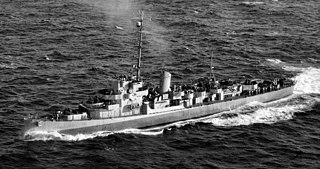
USS Burrows (DE-105) was a Cannon-class destroyer escort built for the U.S. Navy during World War II. She served in both the Atlantic Ocean and the Pacific Ocean, and provided escort service against submarine and air attack for Navy vessels and convoys.

USS Kenneth M. Willett (DE-354) was a John C. Butler-class destroyer escort acquired by the U.S. Navy during World War II. The primary purpose of the destroyer escort was to escort and protect ships in convoy, in addition to other tasks as assigned, such as patrol or radar picket.

USS Lloyd E. Acree (DE-356) was a John C. Butler-class destroyer escort acquired by the U.S. Navy during World War II. The primary purpose of the destroyer escort was to escort and protect ships in convoy, in addition to other tasks as assigned, such as patrol or radar picket.

USS Richard M. Rowell (DE-403) was a John C. Butler-class destroyer escort acquired by the United States Navy during World War II. The primary purpose of the destroyer escort was to escort and protect ships in convoy, in addition to other tasks as assigned, such as patrol or radar picket. During her career she earned six battle stars to her credit.

USS Thomas F. Nickel (DE-587) was a Rudderow-class destroyer escort in service with the United States Navy from 1944 to 1946 and from 1948 to 1958. She was sold for scrapping in 1973.

USS Teak (AN-35/YN-30) was an Aloe-class net laying ship which served with the U.S. Navy in the Pacific Ocean theatre of operations during World War II. She was assigned to serve the U.S. Pacific Fleet with her protective anti-submarine nets and earned two battle stars and other commendations for her bravery.
USS Garnet (PYc-15) was a coastal patrol yacht in the service of the United States Navy.
